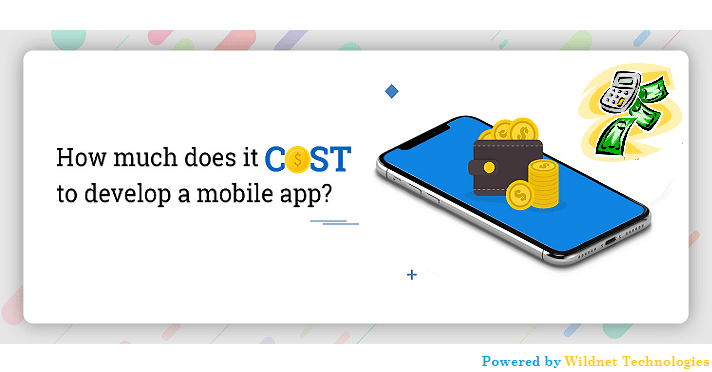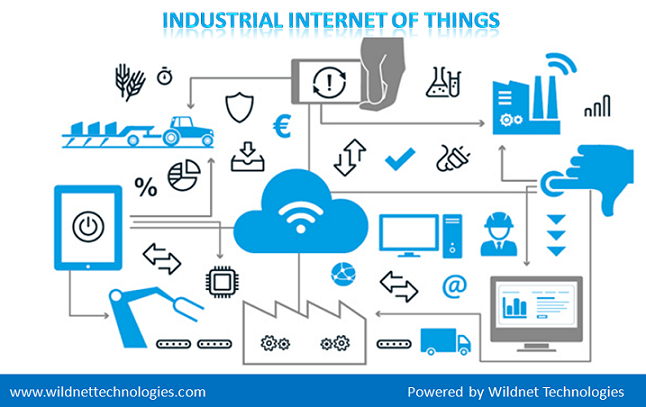Marketing collateral refers to a collection of media and materials to support sales and promote a company’s products or services. These materials can include brochures, flyers, catalogs, newsletters, and digital content such as infographics, eBooks, and social media posts.
Defining Marketing Collateral
At its core, marketing collateral encompasses any media used to communicate a company’s brand message and value proposition. This includes traditional print materials as well as modern digital assets designed to engage and inform potential customers. By aligning these materials with your brand’s objectives, you can ensure a cohesive message across all channels.
Historical Evolution
The concept of marketing collateral has evolved significantly over the years. Print materials were the primary form of collateral in the past, but with the advent of digital media, businesses now have many options. Understanding this evolution helps companies adapt to current trends and leverage the most effective tools for their audience.
Integration with Marketing Strategy
Marketing collateral is not an isolated component; it must be integrated into the broader marketing strategy. This means aligning collateral with business goals, sales objectives, and overall brand messaging. By doing so, businesses ensure that every piece of collateral serves a purpose and contributes to the overall success of marketing efforts.
The Role of Marketing Content
Marketing content is the foundation of your collateral. It informs, engages, and persuades potential customers. By providing valuable information and insights, marketing content helps build trust and establish your brand as an authority in your industry.
Building Trust and Credibility
The primary role of marketing content is to establish your brand as a credible source in your industry. By consistently delivering high-quality, informative content, you demonstrate your expertise and reliability, which helps build long-term relationships with your audience. Trust is crucial in the decision-making process, and well-crafted content can significantly influence your audience’s perception of your brand.
Engaging Your Audience
Engagement goes beyond merely capturing attention; it involves creating meaningful interactions with your audience. Effective marketing content should resonate with your audience’s needs, preferences, and pain points. This can be achieved through storytelling, personalized messaging, and interactive elements that invite your audience to participate and engage with your brand.
Persuading Potential Customers
Ultimately, marketing content aims to persuade potential customers to take action. This involves presenting compelling arguments, showcasing the unique benefits of your products or services, and addressing any objections they may have. Through persuasive content, you can guide your audience through the buyer’s journey and encourage them to convert.
Types of Marketing Materials
Understanding the Importance of Marketing Collateral, Marketing collateral comes in various forms, each serving a unique purpose. Here are some common types:
Print Materials
Brochures and Flyers
Brochures and flyers are tangible tools that provide detailed information about your products and services. They are versatile and can be distributed in various settings, such as trade shows, events, or direct mail campaigns. By incorporating eye-catching designs and clear messaging, these materials can effectively capture the attention of your target audience.
Business Cards
Business cards remain an essential tool for networking and establishing professional connections. A well-designed business card provides vital contact information and reinforces your brand identity. It is a physical reminder of your interaction and can leave a lasting impression on potential clients or partners.
Posters and Banners
Posters and banners are ideal for creating visual impact in physical spaces. Whether used at events, in-store displays, or outdoor advertising, these materials can effectively communicate your brand message to a large audience. Bold visuals and concise messaging can help you capture attention and convey your value proposition quickly.
Digital Materials
Web Content
Your website is often the first point of contact with potential customers. It should be informative, easy to navigate, and visually appealing. Web content includes blog posts and product descriptions, landing pages, and multimedia elements. A well-optimized website can enhance user experience and drive conversions.
Email Newsletters
Email newsletters are powerful tools for keeping your audience engaged and informed. By providing valuable content, updates, and offers, you can maintain regular contact with your audience and nurture leads. Personalization and segmentation can further enhance the effectiveness of your email campaigns, ensuring that your messages resonate with each recipient.
Social Media Content
Social media platforms like Facebook, Instagram, and LinkedIn offer unique opportunities for real-time engagement. By creating shareable content, participating in conversations, and leveraging platform-specific features, you can reach a broad audience and foster a community around your brand. Consistent and strategic social media efforts can amplify your brand’s reach and influence.
Why is Marketing Collateral Important?
Enhances Brand Awareness
Marketing collateral helps build and reinforce your brand identity. Consistent design and messaging across all materials make your brand easily recognizable and memorable.
Establishing a Strong Brand Identity
Brand identity is more than just a logo or color scheme; it encompasses your audience’s entire experience with your brand. Marketing collateral plays a crucial role in shaping this experience by ensuring design, tone, and messaging consistency. A strong brand identity helps differentiate your business and fosters a sense of trust and reliability.
Increasing Visibility
Visibility is key to building brand awareness. Strategically distributing marketing collateral, both online and offline, can increase your brand’s presence in the marketplace. This includes utilizing SEO strategies for digital content, participating in industry events, and leveraging partnerships to expand your reach.
Creating Lasting Impressions
First impressions matter, and high-quality marketing collateral can leave a lasting impact on your audience. Investing in professional design and compelling messaging ensures that your brand is perceived positively and remembered long after the initial interaction.
Supports Sales Efforts
Sales teams rely on marketing collateral to provide prospects with the information they need to make informed decisions. Well-designed materials can highlight your products’ unique features and benefits, making it easier for salespeople to close deals.
Facilitating the Sales Process
Marketing collateral acts as a support system for your sales team, providing them with the tools they need to communicate your value proposition effectively. From product data sheets to case studies, these materials help streamline the sales process and address potential objections, ultimately aiding conversion.
Educating Prospects
Educational content is a powerful tool in the sales process. By providing valuable insights and information, you can help prospects understand how your products or services can solve their problems. This not only aids in decision-making but also positions your brand as a knowledgeable partner in their journey.
Demonstrating Value
Adequate marketing collateral communicates the value of your offerings. You can demonstrate why your products or services are the best choice by highlighting key benefits, features, and differentiators. This, in turn, builds confidence in your brand and encourages prospects to take the next step.
Establishes Credibility
High-quality marketing materials demonstrate professionalism and expertise. They show that your business is serious about what it does and can be trusted to deliver on its promises.
Building a Professional Image
A professional image is crucial for gaining trust and credibility. Well-designed marketing collateral reflects your commitment to quality and attention to detail. By presenting a polished and cohesive brand image, you can instill confidence in your audience and differentiate yourself from competitors.
Communicating Expertise
Marketing collateral provides a platform to showcase your expertise and industry knowledge. Through whitepapers, case studies, and expert articles, you can demonstrate your understanding of the market and establish your brand as a thought leader. This positions your business as a go-to resource for valuable insights and solutions.
Reinforcing Trust
Trust is a key component of any successful business relationship. Consistently delivering high-quality marketing materials reinforces your brand’s reliability and commitment to excellence. This builds trust with your audience and encourages long-term loyalty.
Provides Information
Marketing collateral serves as a reference for potential customers. It provides essential details about your offerings, helping them understand how your products or services can meet their needs.
Delivering Key Information
Clear and concise information is essential for helping potential customers make informed decisions. Marketing collateral provides a platform to communicate crucial details, such as product specifications, pricing, and usage instructions. Presenting this information in an easily digestible format can facilitate understanding and drive engagement.
Addressing Customer Needs
Understanding and addressing customer needs is at the heart of adequate marketing collateral. By tailoring your messaging to resonate with your audience’s pain points and preferences, you can demonstrate how your offerings align with their goals and objectives. This personalized approach enhances the relevance and impact of your materials.
Supporting Decision-Making
Decision-making can be complex, and marketing collateral is critical in guiding potential customers through this journey. You can offer the information needed to evaluate options and make confident choices by providing comparative analyses, testimonials, and case studies.
Creating Effective Marketing Collateral
Know Your Audience
Before creating any marketing materials, it’s crucial to understand your target audience. What are their needs, preferences, and pain points? Tailor your content to address these factors and resonate with your audience.
Conducting Audience Research
Thorough audience research is the foundation of adequate marketing collateral. Data on demographics, behaviors, and preferences can help gain valuable insights into your audience’s needs and motivations. This information informs the development of targeted and relevant content.
Creating Buyer Personas
Buyer personas are detailed representations of your ideal customers. By creating personas based on your research, you can better understand the characteristics and preferences of your target audience. This helps ensure your marketing materials resonate with the right people and address their needs.
Personalizing Your Approach
Personalization is key to creating marketing collateral that connects with your audience. Tailoring your messaging and design to reflect individual preferences and pain points can enhance engagement and build stronger relationships. This personalized approach demonstrates your commitment to meeting each customer’s unique needs.
Consistent Branding
Ensure all your marketing materials reflect your brand’s visual identity and voice. Consistency helps reinforce your brand image and makes it easier for customers to recognize and remember your business.
Developing Brand Guidelines
Brand guidelines provide a roadmap for maintaining consistency across all marketing materials. These guidelines outline essential elements such as color schemes, typography, logo usage, and tone of voice. Adhering to these standards ensures that your collateral aligns with your brand identity and delivers a unified message.
Maintaining Visual Consistency
Visual consistency is crucial for creating a cohesive brand experience. Using consistent design elements and layouts, you can reinforce your brand’s identity and make it easily recognizable. This helps build trust and familiarity with your audience, enhancing the overall impact of your marketing efforts.
Aligning Messaging and Tone
Consistency in messaging and tone is equally important. Your marketing collateral should communicate a unified brand message that aligns with your values and objectives. By maintaining a consistent voice, you can create a seamless experience for your audience and strengthen your brand’s position in the market.
Focus on Quality
Invest in high-quality design and production for your marketing collateral. Well-designed materials are more likely to capture attention and leave a positive impression.
Investing in Professional Design
Professional design is a worthwhile investment that can elevate the quality of your marketing collateral. Skilled designers can create visually appealing materials that effectively communicate your brand message. This enhances the perceived value of your offerings and makes a positive impression on your audience.
Ensuring High-Quality Production
Quality production is essential for delivering marketing collateral that reflects your brand’s commitment to excellence. From print materials to digital assets, attention to detail and high production standards ensure that your materials are visually appealing and functional. This enhances the credibility and effectiveness of your marketing efforts.
Evaluating and Refining
Regular evaluation and refinement are key to maintaining the quality of your marketing collateral. Gathering feedback, analyzing performance metrics, and staying informed about industry trends can help you identify areas for improvement and make necessary adjustments. This continuous improvement process ensures that your materials remain relevant and impactful.
Use a Clear Call-to-Action
Every piece of marketing collateral should have a clear call to action (CTA). Whether the CTA is to visit your website, contact your sales team, or make a purchase, it should be easy to find and understand.
Crafting Compelling CTAs
A compelling call-to-action is essential for driving conversions. It should be clear, concise, and aligned with your audience’s needs and motivations. By using action-oriented language and creating a sense of urgency, you can encourage your audience to take the desired action.
Placement and Visibility
The placement and visibility of your CTA are critical for ensuring its effectiveness. It should be prominently displayed and easily accessible, whether it’s on a webpage, brochure, or social media post. By making your CTA stand out, you increase the likelihood of your audience taking the desired action.
Testing and Optimization
Testing and optimization are essential for maximizing the impact of your CTAs. By experimenting with different wording, designs, and placements, you can identify what works best for your audience. Continuous testing and refinement ensure your CTAs remain effective and drive the desired results.
Measuring the Success of Your Marketing Collateral
To ensure your marketing collateral is adequate, it is necessary to Understanding the Importance of Marketing Collateral. Here are some ways to measure success:
Monitor Engagement
Track how your audience interacts with your marketing materials. Analyze metrics such as website visits, social media likes, shares, and comments to gauge engagement levels.
Utilizing Analytics Tools
Analytics tools provide valuable insights into how your audience engages with your marketing collateral. By tracking key metrics such as click-through rates, time on page, and social media interactions, you can assess your materials’ effectiveness and identify areas for improvement.
Understanding Audience Behavior
Understanding audience behavior is key to measuring engagement. Analyzing how your audience interacts with your materials lets you gain insights into their preferences and interests. This information helps inform future content development and ensures your marketing efforts resonate with your audience.
Identifying Trends and Patterns
Identifying trends and patterns in engagement data can provide valuable insights into your audience’s preferences. By analyzing this information, you can determine what content resonates most with your audience and adjust your strategy accordingly. This helps ensure that your marketing collateral remains relevant and impactful.
Gather Feedback
Collect feedback from your sales team and customers to understand how well your marketing collateral supports the sales process and meets their needs.
Soliciting Input from Sales Teams
Sales teams are on the front lines of customer interaction and can provide valuable feedback on the effectiveness of marketing collateral. By gathering input from sales professionals, you can identify gaps in your materials and make necessary adjustments to support the sales process better.
Engaging with Customers
Customer feedback is an invaluable resource for evaluating the effectiveness of your marketing collateral. By engaging with customers through surveys, interviews, or focus groups, you can gain insights into their perceptions and experiences. This information helps inform improvements and ensures that your materials meet customer needs.
Implementing Feedback into Strategy
Feedback should be used as a tool for continuous improvement. By incorporating feedback into your marketing strategy, you can make informed content development and distribution decisions. This ensures that your marketing collateral remains effective and aligned with your audience’s needs.
Analyze Conversion Rates
Measure the number of leads or sales generated by your marketing materials. High conversion rates indicate that your collateral effectively persuades potential customers to take action.
Tracking Lead Generation
Lead generation is a key metric for evaluating the success of your marketing collateral. By tracking the number of leads generated from your materials, you can assess their effectiveness in driving conversions. This information helps inform future content development and distribution strategies.
Evaluating Conversion Paths
Understanding your audience’s conversion paths is essential for evaluating the effectiveness of your marketing collateral. By analyzing how leads move through the sales funnel, you can identify which materials are most effective at driving conversions. This information helps optimize your marketing efforts and maximize ROI.
Optimizing for Higher Conversions
Continuous optimization is key to improving conversion rates. By testing different elements, such as messaging, design, and placement, you can identify what works best for your audience. This process ensures that your marketing collateral remains effective and drives the desired results.
Conclusion
Marketing collateral is an essential component of any successful marketing strategy. Well-crafted marketing materials can help your business achieve its goals by providing valuable information, enhancing brand awareness, and supporting sales efforts.
Investing in high-quality marketing content and materials establishes your credibility and ensures that your message reaches and resonates with your target audience. Always continually evaluate and refine your collateral to maximize its impact and drive business growth. By understanding the importance of marketing collateral and implementing best practices, you can create materials that effectively communicate your brand message and drive success.
Marketing collateral is pivotal in reinforcing brand identity and enhancing communication across multiple customer touchpoints. Whether it’s a digital brochure, an informative whitepaper, or a compelling video, well-crafted collateral ensures that your brand leaves a lasting impression.
In digital marketing services, marketing collateral is a key asset. It supports campaigns, nurtures leads, and empowers your sales team with the tools they need to convert prospects into loyal customers. As businesses continue to compete in a content-saturated market, investing in quality marketing collateral is no longer optional—it’s a strategic necessity. You create a cohesive, impactful experience that drives real results by aligning your marketing collateral with your digital marketing services.
1. What is marketing collateral?
Ans. Marketing collateral is a collection of media and materials used to support sales and marketing, including brochures, presentations, flyers, case studies, and digital assets.
2. Why is marketing collateral important for a business?
Ans. It ensures consistent brand messaging, builds trust, and provides valuable information to potential customers at various stages of the buyer’s journey.
3. How does marketing collateral support digital marketing services?
Ans. It enhances digital campaigns by providing downloadable resources, email attachments, landing page assets, and engaging content that nurtures lead and drives conversions.
4. What types of marketing collateral are used in digital marketing?
Ans. Common types include eBooks, infographics, social media graphics, video content, newsletters, blog posts, and whitepapers tailored to specific digital platforms.
5. How can well-designed marketing collateral improve customer engagement?
Ans. Visually appealing and informative collateral captures attention simplifies complex messages, and guides users toward a call-to-action, improving engagement and retention rates.
Read More……………………
How Can AI Support Marketing Strategies In Business?
Nike Marketing Strategy: How Nike Became a Global Brand Icon?
Mastering the Conversion Formula in Retail with Digital Marketing
From Clicks to Conversions: The Scope of Consumer behaviour in Digital Marketing






